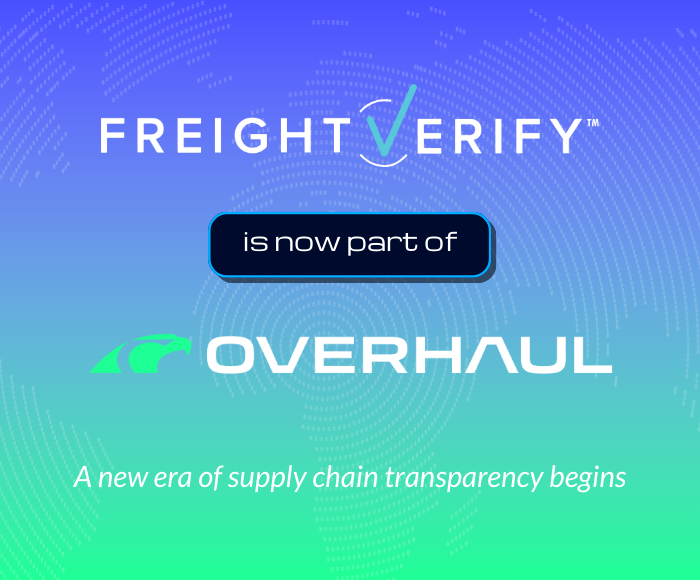Avocados are tropical fruits most notably produced in Mexico, the Dominican Republic, Peru, Colombia, Indonesia, Kenya, Chile, and Israel. Due to their potential health benefits and versatility, the demand for avocados has skyrocketed in recent years. Avocado consumption per capita has essentially quadrupled since 2001, and Americans consumed 2.7 billion pounds of them in 2020 alone. However, strong global consumer demand is putting a strain on the intricate supply chain processes involved in avocado transportation.
How are avocados transported?
Cold chain and compliance needs
Because produce is sensitive to temperature fluctuations, avocados require temperature-controlled shipping. Typically, avocados should be kept at temperatures between 45 and 50 degrees Fahrenheit and humidity levels of around 85-95%. To do so, shippers should use specialized refrigerated containers to create a controlled atmosphere and prevent premature ripening or spoilage.
Proper packaging materials are also essential to protect the fruit from physical damage and to maintain the right level of humidity. This might include perforated, breathable bags or boxes that allow for proper ventilation. This helps reduce the risk of bruising or mishandling that can impact produce quality.
A final requirement for avocado transportation is regular inspection. Experts must examine the avocados at different points to check for signs of damage or decay. Any affected fruits should then be removed to prevent further spoilage.
Mexico: the global powerhouse and global exporter
The USDA reports that avocado imports account for 90% of the USA’s supply. Mexico remains the leading global producer of avocados, with the United States as the main destination for its exports. In fact, a staggering 88% of U.S. avocado shipments come from Mexico.
Today, the avocado transportation routes from Mexico to other countries are well-established and efficient. Because maintaining freshness is crucial, transport modes include trucks, ships, and planes to deliver this produce to distant markets. However, there are a few common challenges supply chain organizations face in the process.
Challenges facing avocado transportation
1. Cargo theft
The number of violent cargo truck hijackings reported in Mexico increased by 3% from 7,421 in 2021 to 7,644 in 2022. In total, 20,131 cargo theft events were recorded in Mexico during 2022, representing an increase of 1.3%. As the demand for and value of this produce increases, shipping avocados may continue to pose risks and lead to potential losses.
2. Seasonal fluctuations
Avocado production in Mexico experiences seasonal variations, leading to possible supply gaps that can impact distribution, international trade, and market prices.
3. Lack of visibility
Insufficient tracking and monitoring procedures can make it difficult to trace shipments accurately. This hampers timely delivery and makes it hard to proactively identify and address problems.
4. Transportation distance
Shipping avocados to international destinations adds complexities to the supply chain and increases the risk of spoilage if not managed properly.
5. Infrastructure issues
Some regions in Mexico might face road, rail, or other infrastructure limitations, which affect the movement of fresh fruit.
Despite these challenges, Mexico continues to play a key role in the avocado industry. Its long-standing transportation routes effectively facilitate the flow of this produce worldwide.
Discover best practices for avocado transportation success
Leveraging best practices for fresh avocado transportation is key to maintaining post-harvest quality and extending the fruit’s shelf life. To avoid a high degree of food loss or product deterioration, consider the following strategies:
1. Real-time monitoring and traceability
Implement advanced tracking systems that provide real-time visibility into avocado shipments. This enables faster identification of potential problems and ensures compliance with international industry standards. Ultimately, greater oversight is vital to improve supply chain efficiency and reduce risk.
2. Collaboration and communication
Establish strong partnerships among growers, distributors and transporters by fostering effective communication and cooperation throughout the supply chain. Collaborative planning, information sharing, and performance measurement and incentives are key. By working together, teams can address issues quickly and make informed decisions for more successful avocado transportation.
3. Training and education
Invest in training and education for all stakeholders involved in the avocado supply chain to ensure best practices are followed consistently. This includes training truck drivers on safe handling procedures and safety precautions and providing guidelines for handling and storing avocados properly. Well-informed teams are better equipped to tackle challenges, contributing to more efficient production and distribution.
How digital solutions are enhancing the avocado supply chain
Imports of Mexican avocados represent the biggest trade flow in the world. This puts added pressure on an already complex supply chain. Because produce quality and timely delivery are essential, organizations can utilize digital supply chain solutions to streamline avocado transportation.
Overhaul offers a range of cutting-edge solutions that equip your team with real-time visibility and control. From data analytics to predictive insights, our data-agnostic platform empowers you to optimize avocado transportation while mitigating potential risks.
Ready to elevate your procedures for avocado transportation? Request a demo to learn more about supply chain visibility and risk management solutions from Overhaul.






